This Indian Family Left Singapore to Let Their Child Learn Without School in the Hills of Uttarakhand

In this column, TBI editorial brings you articles from experts across India, tackling the challenges that matter most. These insightful pieces offer practical solutions and inspire us to take proactive steps in addressing the issues we face in our communities and beyond.
About the author: Stuti Agarwal is a former journalist with over six years of experience in parenting, lifestyle, and travel content. As a mother of two young ones, she brings a grounded and relatable perspective to modern-day parenting in India. Her writing is shaped by personal experience, careful observation, and a deep understanding of the evolving needs of families today.
Through her digital presence at @mombae.blogger, Stuti shares practical tips, everyday stories, and thoughtful reflections aimed at supporting parents in making informed, conscious choices. Her content spans topics like child development, family routines, travel with kids, and the emotional journey of motherhood.
I’ve known Garima for about five years now. What began as casual conversations about motherhood and conscious living soon grew into something much more layered. I watched, almost in awe, as she and her husband, Aditya, transitioned from successful urban professionals to homesteaders in the hills of Uttarakhand—embracing a life most of us only romanticise about but never truly consider living.
 Garima, Aditya, and Vedas moved from Singapore’s fast life to the calm of Uttarakhand to live with more meaning, intention, and space.
Garima, Aditya, and Vedas moved from Singapore’s fast life to the calm of Uttarakhand to live with more meaning, intention, and space.
Their journey, documented beautifully on their Instagram page Life of Maai, is not a rebellion against modern life but a return. A return to roots, simplicity, and intuition. But what really sets them apart is their approach to parenting and, more specifically, education. Or rather, the complete reimagining of it.
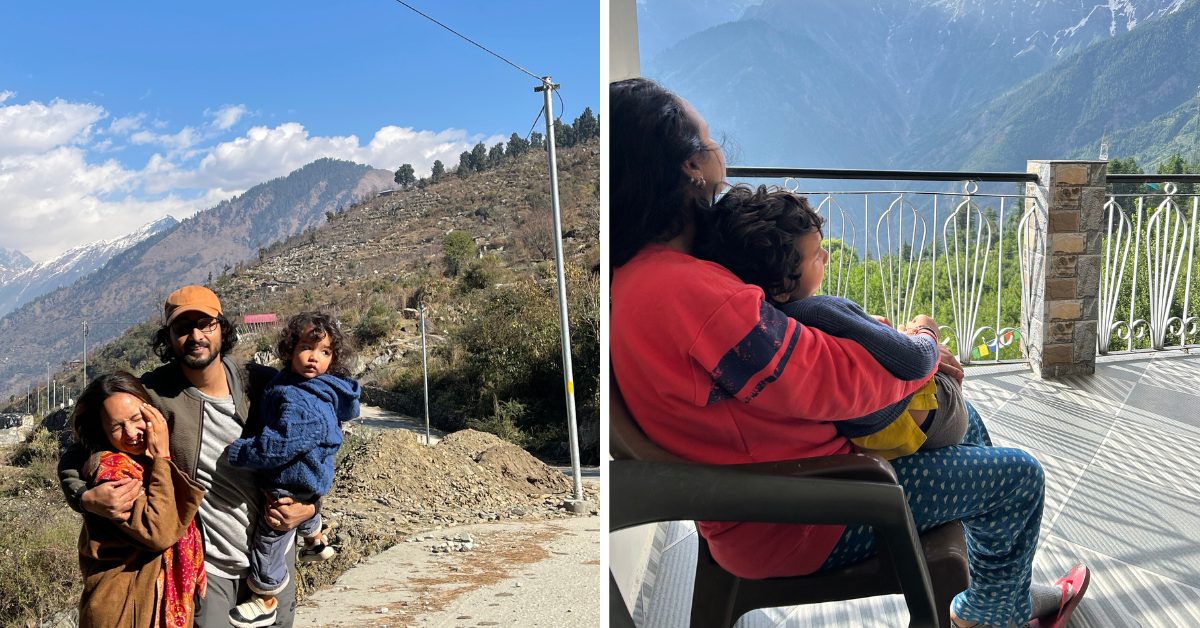 Now nestled in the hills, their days begin with mist and birdcalls — not alarms and rush hour.
Now nestled in the hills, their days begin with mist and birdcalls — not alarms and rush hour.
Their 6-year-old son, Vedas, has never been to school. No uniforms, no syllabus, no annual days or report cards. He is what some would call “unschooled ”but labels fall short when describing a life lived with such intention and trust.
From Nike to nature
Aditya’s story reads like a polished success pitch. A medical school dropout who pivoted to fashion management, he worked with brands like Nike across Southeast Asia, living in Singapore with a handsome paycheck and a fast-paced career. Garima, a designer with a keen aesthetic eye, was also thriving professionally.
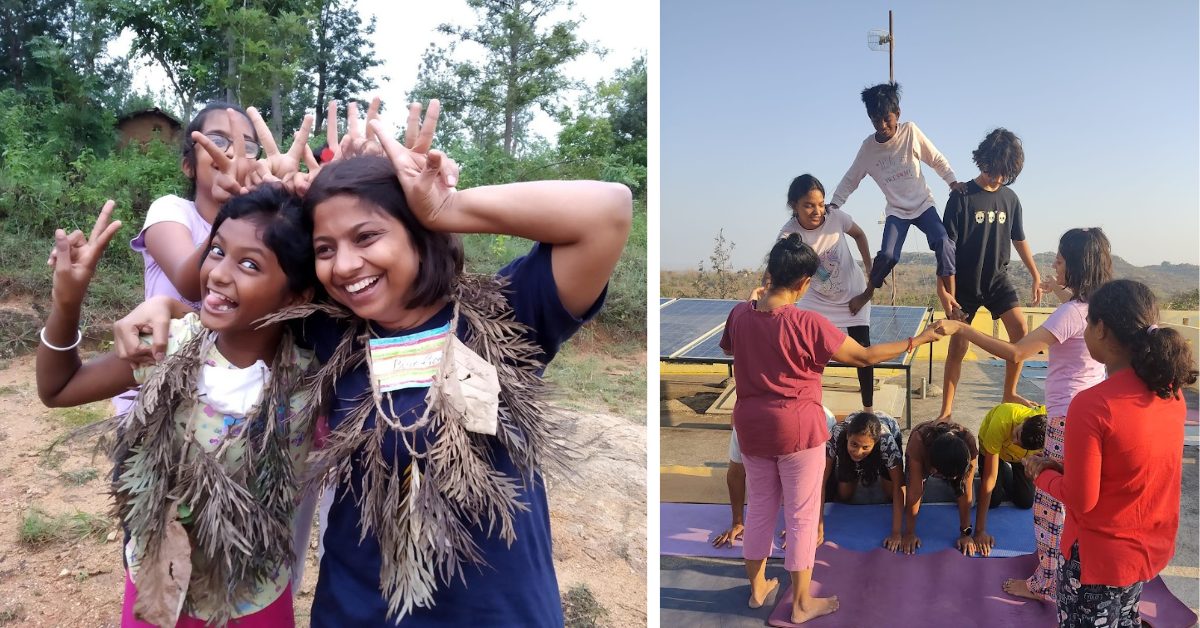 From city shoes to hiking boots—Aditya and Garima stepped away from structure and began to ask what really matters.
From city shoes to hiking boots—Aditya and Garima stepped away from structure and began to ask what really matters.
To the outside world, they had it all—a cosmopolitan lifestyle, international travel, financial security. But beneath that surface, questions were stirring.
“It started small,” Aditya said. “We began wondering—what are we eating? What are we buying? What are we teaching our child just by the way we live?” Singapore, for all its sleek efficiency, began to feel too sanitised. The food seemed plastic, the routine felt like a cage, and the pace left little room to breathe, let alone reflect.
They began travelling back to India with empty suitcases just to fill them with millets, pulses, Ayurvedic herbs, and cold-pressed oils. “We’d get funny looks from friends,” Garima says, smiling. “But our pantry in Singapore was more indigenous than most homes in India.”
Eventually, it wasn’t enough to just bring pieces of India into their home. They needed to bring their home to India.
The pregnancy that changed everything
The turning point came when Garima was expecting Vedas. Like most first-time parents, they began researching preschools and reading up on developmental theories. But instead of answers, they found more questions.
“What if we didn’t follow the herd?” Garima asked me once. “What if there was another way?”
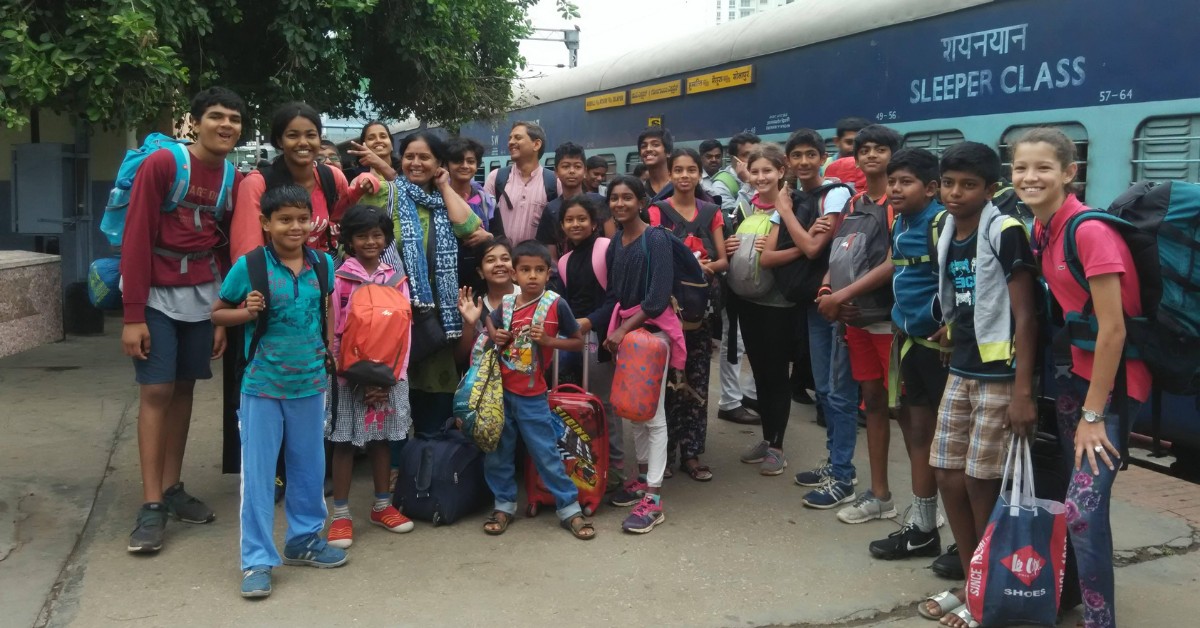 The family embraced uncertainty, choosing community, nature, and time together over financial safety nets and fast-paced living.
The family embraced uncertainty, choosing community, nature, and time together over financial safety nets and fast-paced living.
The idea of unschooling came to them like a whisper—but it soon grew into a roar. They discovered Swaraj University in Udaipur—a learning space built around alternative education and sustainable living. It felt like home. They spent six months there, learning, unlearning, and meeting other families who were walking away from traditional systems.
Back in Singapore, they did what most people wouldn’t—sat down with a spreadsheet. “We calculated that if we cut out exorbitant rent, staff, shopping, and entertainment, we could sustain ourselves for 4–5 years without working,” Aditya explained. “And the kind of life we envisioned—in nature, with a small community—was not expensive.”
So, they packed up their lives and moved to the hills. No safety net. Just faith.
What does unschooling look like?
One of the most common questions I get when I tell people about their life is, what does their child actually do all day?
The answer is: everything, and nothing. Vedas wakes up with the sun. Sometimes he’s greeted by birdsong, sometimes by the smell of rain. His days unfold organically. He explores, climbs, builds with stones, invents games, observes insects, waters plants, makes compost, paints with mud, and once even crafted a mandir from river stones.
No classes. No screens. No worksheets. Yet he is always learning.
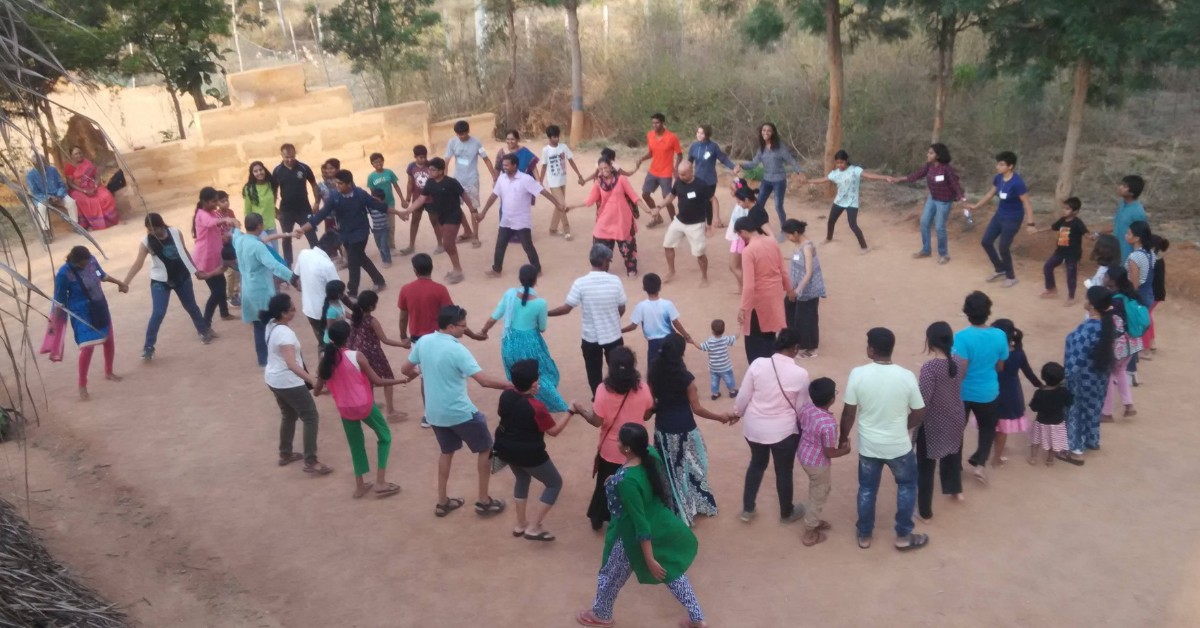 Vedas often plays with local kids, using whatever’s around to build games—like this ball made from old cloth during a cricket match.
Vedas often plays with local kids, using whatever’s around to build games—like this ball made from old cloth during a cricket match.
“He recently discovered cricket with local kids. They didn’t have a ball, so they made one out of old cloth. Problem-solving at its best,” Aditya laughs.
On his birthday, when Aditya and Garima were discussing how many laddoos they needed for the 8 guests, Vedas answered “16” after calculating 8×2. No one had taught him multiplication. He learned it because it was relevant.
This, to me, is the essence of unschooling. Learning that emerges from need, not instruction. The world becomes the classroom—and curiosity, the curriculum.
The real work: unlearning as parents
But the unschooling journey hasn’t just been about Vedas. If anything, Garima and Aditya say they have learned the most.
“We’ve been conditioned to believe that discipline equals success, that structure equals safety,” Garima reflects. “Letting go of that has been the hardest part.”
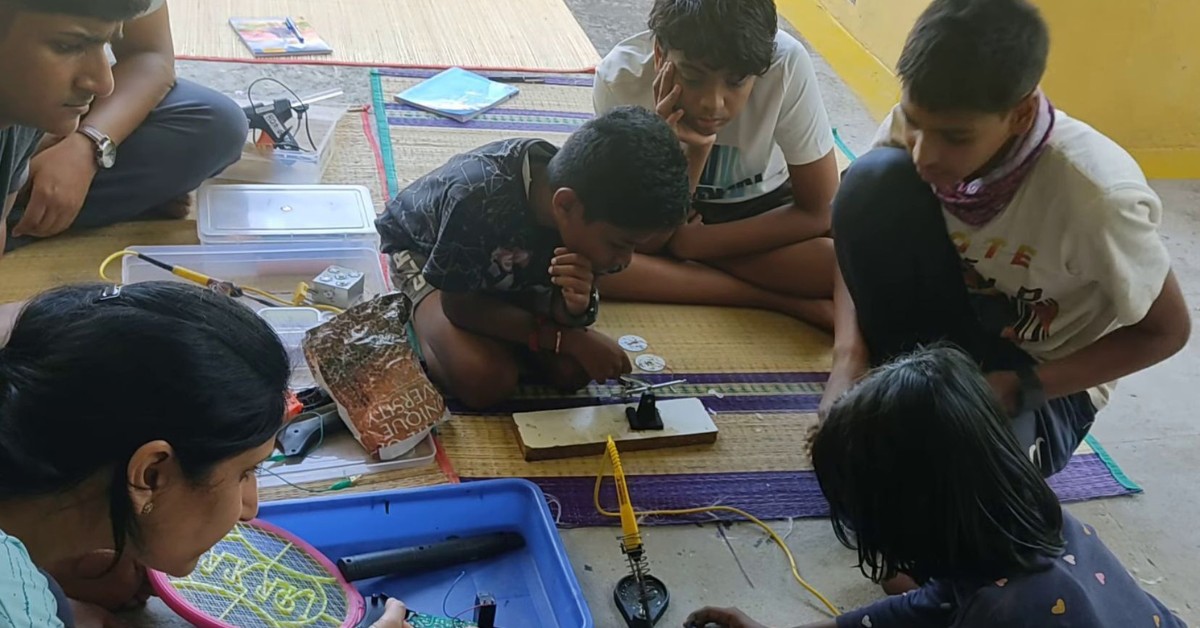 At Aarohi, children lead with play, trust, and collaboration—no adult agenda, just space to grow into their fullest selves.
At Aarohi, children lead with play, trust, and collaboration—no adult agenda, just space to grow into their fullest selves.
Discipline in their home isn’t about time-outs or consequences. “We believe in co-regulation,” Aditya says. “If our child is acting out, we first check—are we okay? Are we rushing? Are we distracted?”
Their parenting is filled with pauses. Moments of holding back instead of stepping in. And more often than not, that space allows Vedas to problem-solve, reflect, and grow.
Every time they resisted the urge to correct or direct, they witnessed magic.
Money matters — and what doesn’t
Of course, one cannot write about a lifestyle like this without addressing the elephant in the room: money.
Garima and Aditya were able to do what they did because of years of financial planning in Singapore. “But we live very frugally now,” Garima points out. “There’s no rent like the city, no shopping, no eating out, no staff. Our needs are few.”
They also earn modestly through content, workshops, and collaborations—but consumption isn’t the center of their world anymore.
Their richness lies elsewhere—in time, in connection, in peace.
But what about the future?
Everyone wants to know—what happens when Vedas grows up? What if he wants to be a doctor?
“If that’s what he wants, he’ll work toward it,” Garima says. “We’re not against textbooks or tests. We’re just against forcing them too early, too often, and too blindly.”
Vedas doesn’t know how to read yet. And that’s okay. A few weeks ago, he asked for books, and they put up a post on Instagram. Followers sent in age-appropriate reads. “When he’s ready, he’ll learn. Until then, we’ll wait.”
Their priority is not grades or careers. It’s building a child who trusts himself, who loves to learn, and who knows joy.
Other voices from the movement
Garima and Aditya are not an isolated case. Across India, a quiet but powerful movement is brewing.
Rachit Gangar, an M.Com from Mumbai, lives in a self-sustained orchard with his wife and two daughters, aged 8 and 4. Neither child has been to school, or even a playgroup.
He admits they sometimes miss peers, but the gains far outweigh the losses. “Our children are deeply connected to nature, to themselves, to their interests. My older one is learning Sanskrit by herself,” he says.
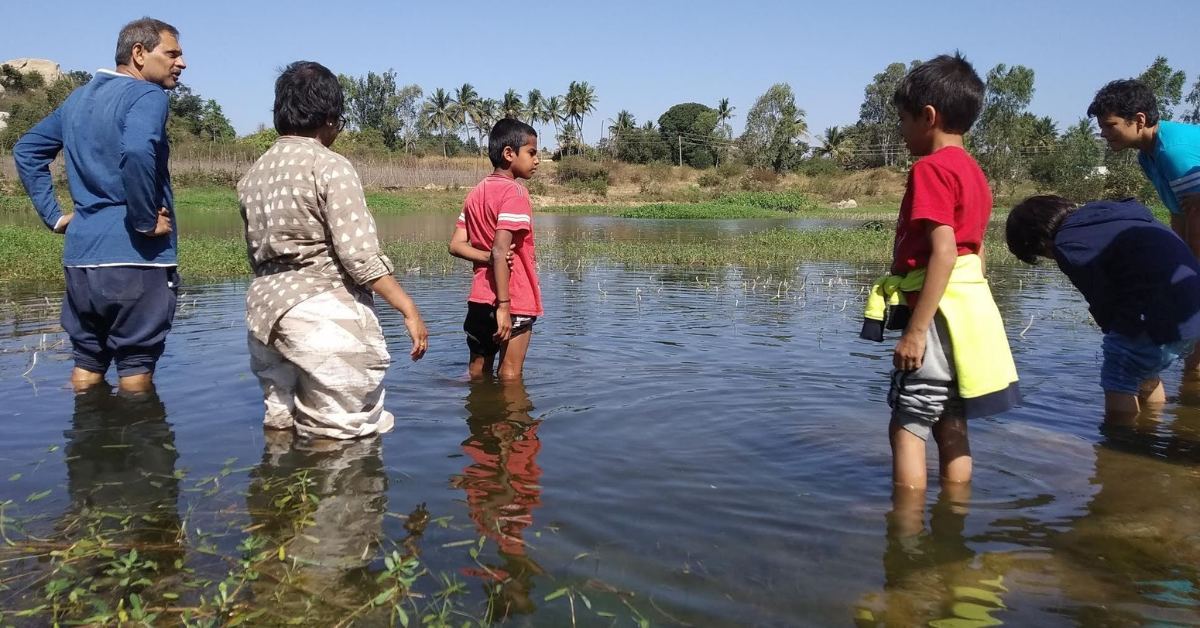 Rachit’s children are raised on a self-sustained orchard, learning Sanskrit and science not from books, but through life.
Rachit’s children are raised on a self-sustained orchard, learning Sanskrit and science not from books, but through life.
Rachit questions the very foundation of modern education. “How many people actually use their degrees? We’re chasing paper while losing wisdom.”
His approach echoes a deeper truth—one that can’t be measured in marksheets.
Then there’s Aarohi, a learning community outside Bangalore founded by Ratnesh and Aditi. Their children have never been to school—and yet, are thriving.
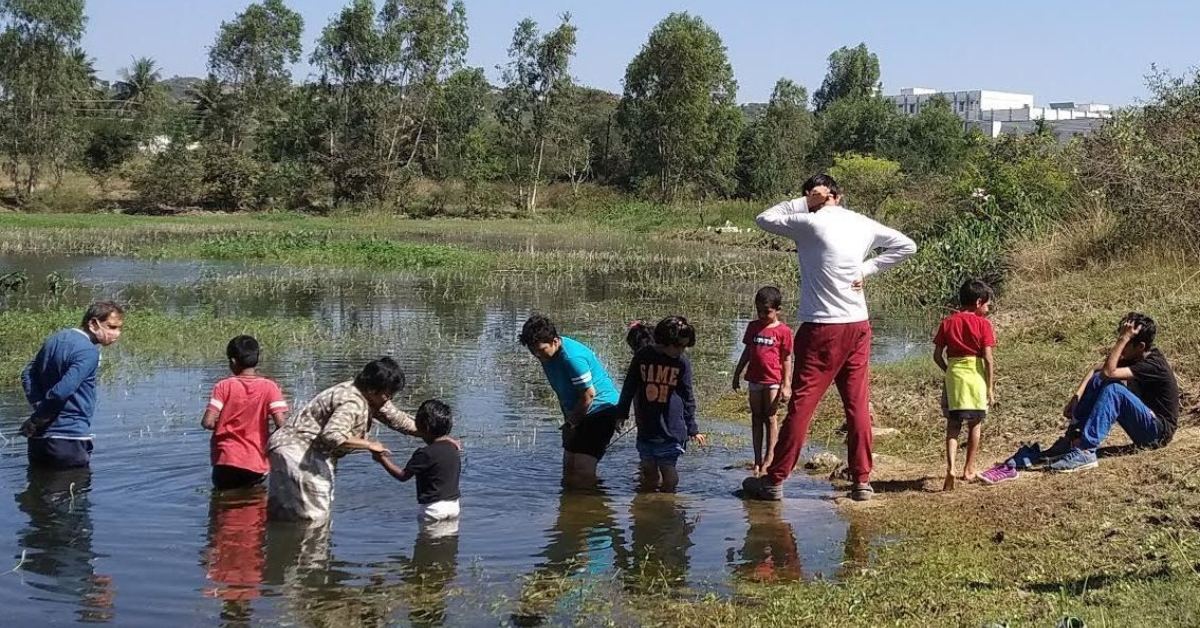 In learning communities like Aarohi, kids never take exams but grow into creators, coders, and conscious entrepreneurs.
In learning communities like Aarohi, kids never take exams but grow into creators, coders, and conscious entrepreneurs.
Their 26-year-old daughter runs a sustainability startup. Their son, Dhrupad, never took an exam—except for a diving certification—but now runs a content agency and works with podcast networks.
Dhrupad breaks down his learning in four phases:
- 4–10 years: Exposure (gardening, cooking, building)
- 10–15 years: Exploration (fitness, photography, travel)
- 15–20 years: Expertise (advertising, digital tools)
- 20+ years: Enterprise (running businesses)
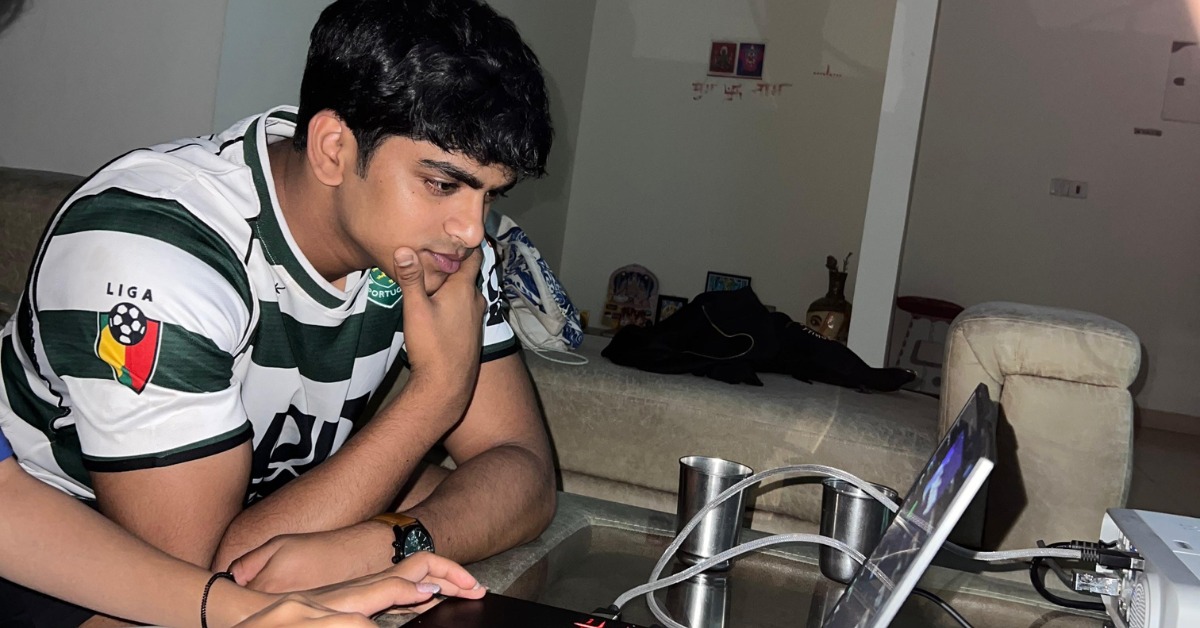 Dhrupad, now running a content agency, never sat through a school exam—but built expertise through lived experience.
Dhrupad, now running a content agency, never sat through a school exam—but built expertise through lived experience.
“When you own your learning,” he says, “you never stop growing.”
But traditional school has its place too
As compelling as these stories are, unschooling isn’t for everyone—and it shouldn’t be.
I spoke to Sunita George, Principal of Bombay Scottish School Mahim, who offered a balanced counterpoint. “Schools today are not just about subjects,” she explained. “They are about learning collaboration, adaptability, emotional intelligence.”
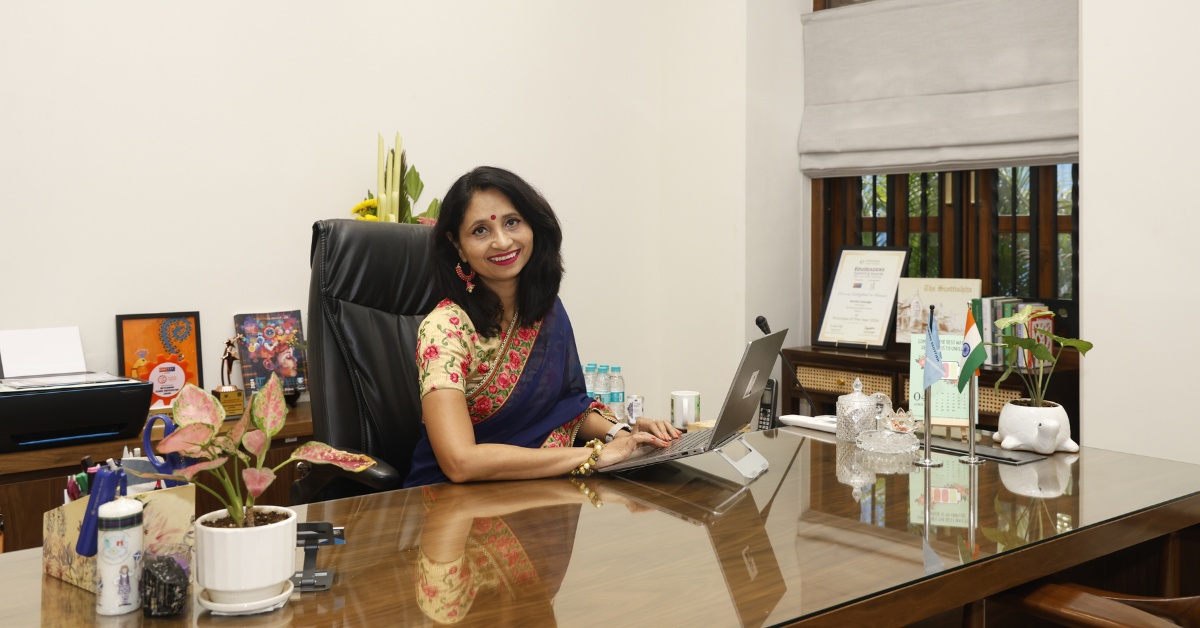 Principal Sunita George says schools can still offer crucial learning—like peer interaction, collaboration, and resilience.
Principal Sunita George says schools can still offer crucial learning—like peer interaction, collaboration, and resilience.
She emphasised that in our nuclear families, schools serve as vital communities—places where children learn to interact with diverse peers, navigate conflict, and discover resilience.
“Even traditional systems had structures like Gurukuls,” she said. “No child was expected to just figure it out alone.”
She believes in the power of both: “Let them have structured learning in school—and free play at home. That’s the best of both worlds.”
A future that respects the child
What stands out across all these stories—whether from the hills of Uttarakhand or the classrooms of Mumbai—is one thing: deep, unwavering respect for the child.
The belief that children are not empty vessels to be filled, but whole beings to be nurtured.
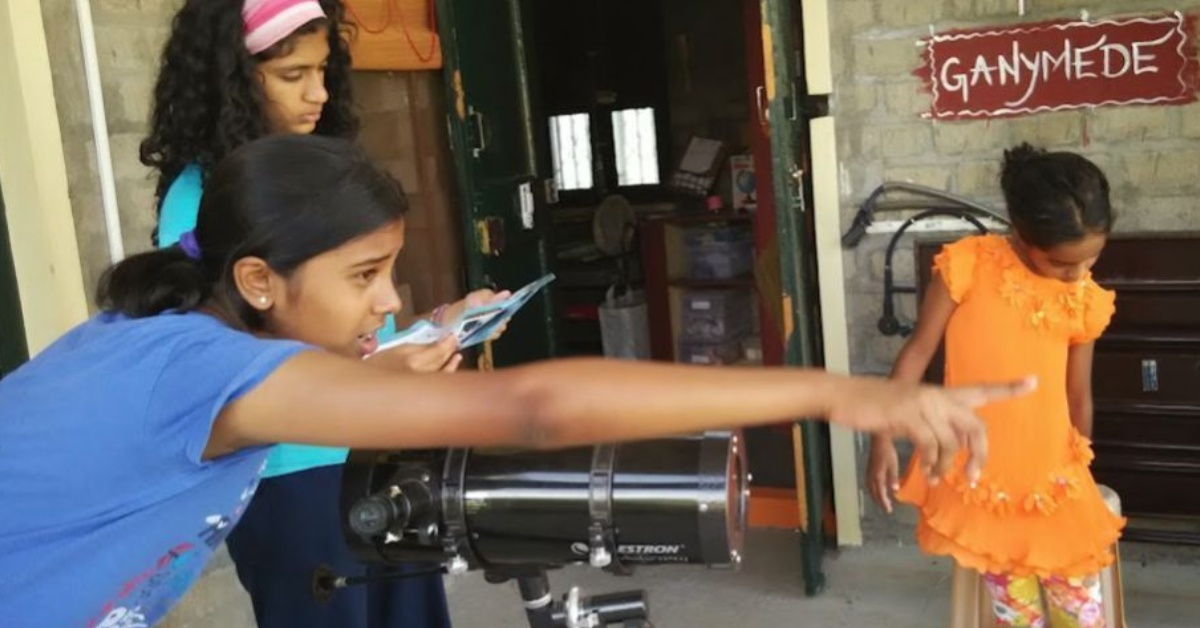 From telescopes to electronics, unschooled children chase what excites them—curiosity is the only curriculum.
From telescopes to electronics, unschooled children chase what excites them—curiosity is the only curriculum.
Some may thrive in schools. Others may flourish in forests. But all children deserve trust, patience, and the freedom to be themselves.
So, what now?
The world is changing. Fast. AI is replacing jobs. Burnout is becoming normal. The race for grades is taking a toll on mental health.
In such times, perhaps it’s worth asking—what really prepares a child for the future? Is it test scores? Or is it adaptability, curiosity, joy, and self-belief?
I don’t claim to have all the answers. But I do know this: watching Vedas chase ants and build with stones, watching Dhrupad build a business without ever entering a classroom, watching Rachit’s daughter devour Sanskrit texts by choice—all of it tells me one thing.
There is more than one path. There is more than one kind of education. And there is infinite possibility when we begin to trust our children — and ourselves.
Edited by Leila Badyari
News